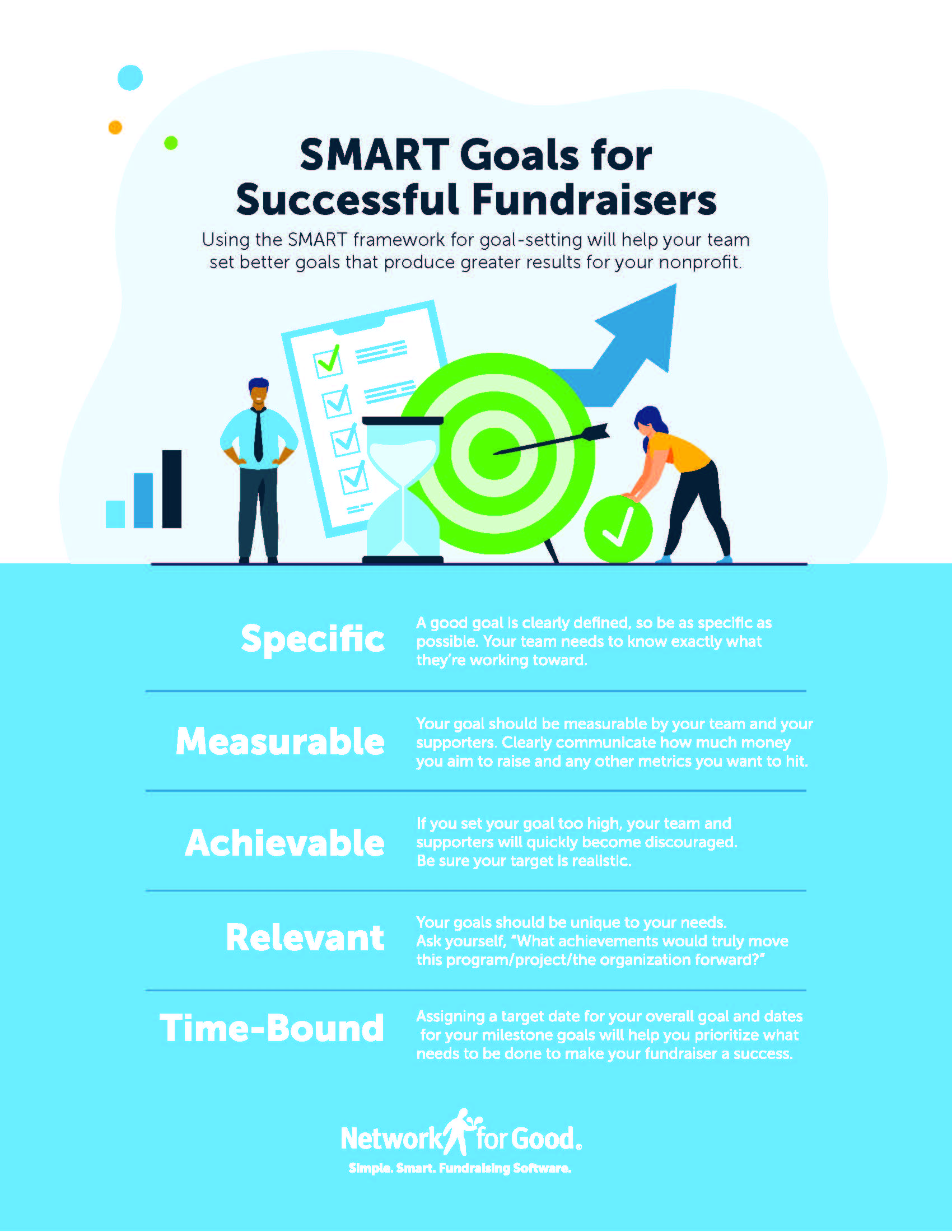How to Set SMART Goals for Year-End Giving
Goals are fuel for year-end fundraising. Effective goal-setting will boost your team’s motivation and focus, provide a roadmap to navigate by, and increase your results. Goal-setting also allows you to better identify the resources and skills you’ll need to run a successful fundraiser and pinpoint the milestones you’ll need to reach along the way. Let’s examine the benefits of goal-setting and explore how you can create more effective goals for your year-end fundraiser.
Benefits of Goal-Setting
There’s a reason every productivity expert recommends goal-setting: it works to improve performance! You’ll discover many benefits as you set and work toward goals as a team, but here are four specific ways that goal-setting will help you get better results.
- Goals serve as a roadmap to guide your efforts — Your overall goal for your year-end fundraiser will identify your destination. And milestone goals will act as a roadmap, guiding you toward that destination.
- Goals unite teams working together — Goals have a way of uniting people as they work to reach them. This is especially true if team members have the opportunity to help formulate the goals since they gain a sense of ownership.
- Goals motivate action — Simply having a goal to reach inspires action. A goal gives you something specific to accomplish.
- Goals give you a reason to celebrate — One of the best ways to keep people motivated is to celebrate wins. Goals come with a built-in opportunity to celebrate your team’s efforts.
Using the SMART Method to Create More Effective Goals
Not all goals are created equal — some are more effective than others. By using the SMART framework for goal-setting, you’ll be much more likely to arrive at your target destination. SMART goals are Specific, Measurable, Achievable, Relevant, and Time-Bound.
Specific
A good goal is clearly defined. Your team needs to know exactly what they’re working toward. Non-specific goals, like “Raise more money this season for Program X” are not very helpful because they don’t tell you what you’re aiming for. How much money do you need to raise for the program? What date do you need to raise it by? What strategies will you use to achieve the goal? The other letters in the SMART acronym are designed to help you create a highly-specific goal with the qualities necessary for success.
Example of a specific goal: “To raise $15,000 by X Date for Program X using a virtual event created for supporters who have already given to Program X.”
Measurable
Your goal should be measurable by your team and your supporters. Be sure to clearly communicate how much money you aim to raise, how many new donors you’re trying to attract, or any other metrics you want to hit. Donors want to know that the target will cover the program’s needs and make a real difference. And your team will be more motivated when they have a solid number to shoot for.
Example of a measurable goal: “To raise $100,000 from two major donors and at least ten new monthly donors.”
Achievable
Stretch goals can help you accomplish more than you thought you could. But if you set your goal too high, your team and supporters will quickly become discouraged. Making your goal achievable is especially important because discouragement is contagious — nothing kills motivation faster than a goal that isn’t reachable.
Example of an achievable goal: “To increase our results from last year’s fundraiser by 10%.”
Relevant
Your goals should be relevant to your fundraiser and the outcomes you want to see. Your goals may include the total number of gifts, number of new donors, number of recurring donors, number of volunteers or volunteer hours, etc. Ask yourself, “What achievements would truly move this program/project/our organization forward?”
Example of a relevant goal: If you are building an educational program with a mentorship component, a relevant goal might be, “To raise $20,000 for program scholarships and attract five mentors who will commit two hours per week.”
Time-Bound
Assigning a target date for your overall goal and dates for your milestone goals will help you prioritize the tasks that will need to be done to make your fundraiser a success. Every small nonprofit faces more tasks than can be done in a year-end season, and setting time boundaries to your goals will help ensure that what matters most will be accomplished.
Example of a relevant goal: “To “raise $20,000 for Program X by the close of our year-end virtual event, on X Date.”
Use our SMART Goals infographic to serve as a handy reference as you’re setting goals for your fundraiser!

Get Better Results With Better Goals
Imagine losing the stress typically associated with year-end fundraising, knowing that you have a clear plan for what you need to accomplish and the milestones that will get you there. When your team sets SMART goals, you’ll function more effectively together as a team and boost the results you achieve together!
Read Expand Your Reach With Virtual Events for Year-End Fundraising to learn more about hosting an effective hybrid fundraiser.
Published: September 13, 2021




